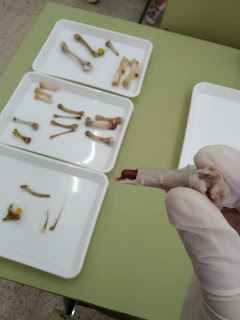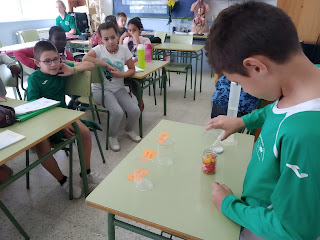Hello everyone!
Today we want to share with you a very special project. For the last weeks, we have been observing the life cycle of butterflies:
It all started when our teacher found some eggs on a broccoli leaf and brought them to school. We observed them through the microscope and saw that we had around 50 yellow eggs:
Two days later, lots of tiny caterpillars hatched from the eggs. We realised that they were very hungry because they started to eat from the very beginning:
We observed them every day: they grew super fast.
At his point, we found out that they were caterpillars from a butterfly called Pieris brassicae.
They were "eating machines" (so, if you look at the pictures, you will realise that there were faeces everywhere...haha):
We also discovered that our caterpillars changed their skin several times. Even their head!
Many of us, took a couple of caterpillar at home, in order to keep observing and taking care of them consciously.
About one month after hatching, these larvae were big enough to start their transformation into a butterfly. This process is called METAMORPHOSIS, and happens to all insects.
The caterpillars attached themselves at the top of the box and started to build their chrysalis:
And finally, about 15 days later, when the pupas turned darker, butterflies started to emerge:
It has been a great project that has caught pupils of all ages.
We couldn't end our project in any way but setting the butterflies free and wishing them good luck!





















































